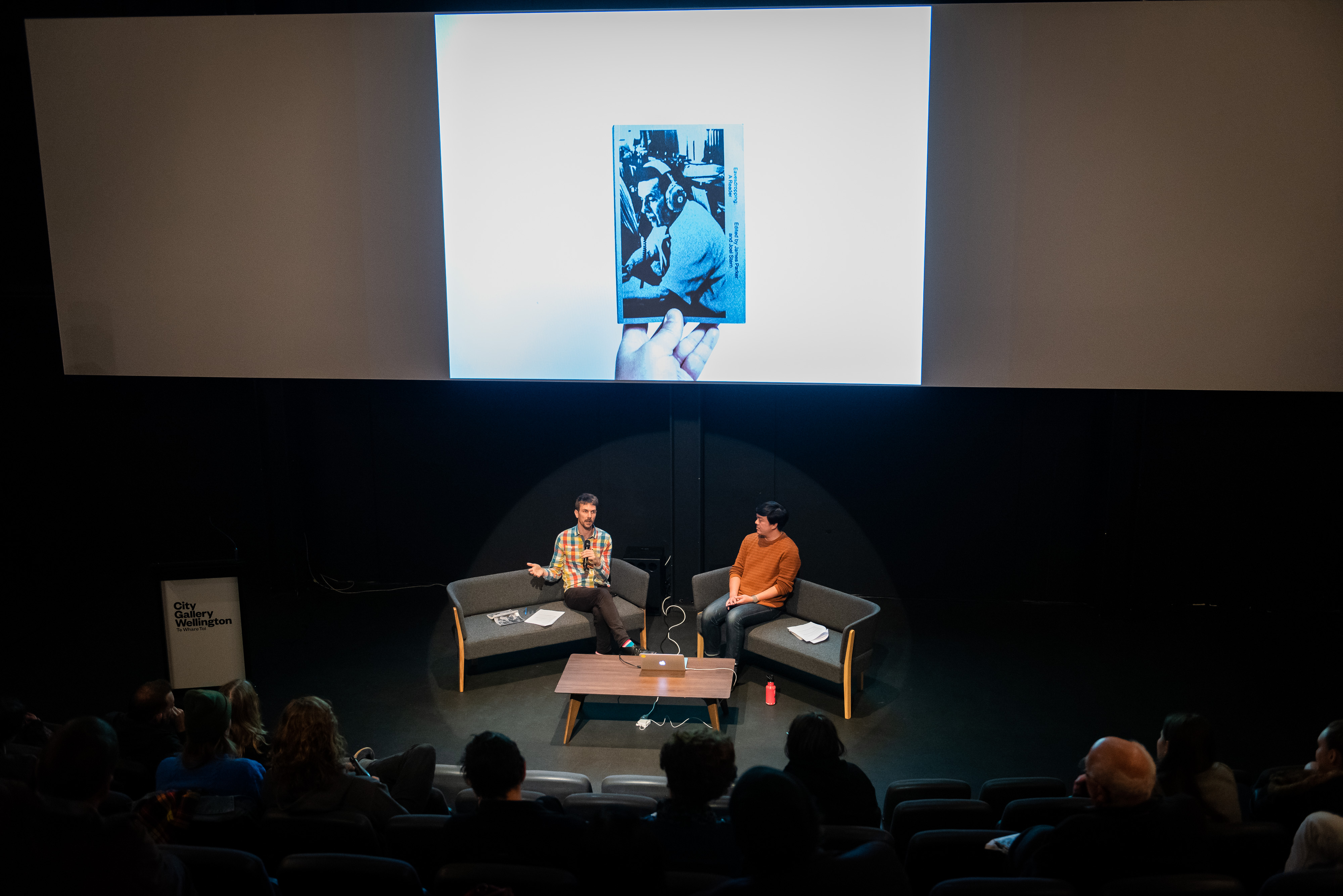Event/s

Te Whare Hēra Eavesdropping Residency
Thu, 05. Sep 2019
Te Whare Hēra Eavesdropping Residency is a partnership with Massey University’s Te Whare Hēra, supported by Liquid Architecture through Creative Victoria’s International Engagement program. Te Whare Hēra Eavesdropping Residency comprises a series of short residencies in the city for exhibiting artists based in Victoria, Australia. Throughout the exhibition, artists and curators will visit Wellington to make new work, deliver talks and connect with the community.
City Gallery Wellington, Te Whare
**How Does a Straight Line Feel? | Sat 16 November, 4pm
**
Artists Bryan Phillips and Fayen d’Evie present a live quadraphonic-sound performance.
Fayen d’Evie is an artist, writer and curator based in Muckleford, rural Victoria whose works are attuned to complex embodiment, sensory translations, ephemerality, obscurity, concealment, wayfinding, and the invisible.
Bryan Phillips is a Chilean Australian artist working in community arts, music and performance, using sound as a means to facilitate engagement with others.
**Indigenous Activism in Art and Architecture | Sun 13 Oct, 2pm
**
Joel Spring (Wiradjuri) and Elisapeta Heta (Ngāti Wai, Ngāti Hāmoa, Waikato-Tanui) present on their practices and activism in both art and architecture.
Joel Spring is a Wiradjuri man raised between Redfern and Alice Springs who works across research, activism, architecture, installation and speculative projects. At present, his work focuses on the contested narratives of Sydney’s and Australia’s urban culture and indigenous history in the face of ongoing colonisation.
Elisapeta Heta is a Senior Associate at architecture firm Jasmax, and is an artist, singer, and member of Ngā Aho, network of Māori design professionals, and ex Co-chair of Architecture+Women NZ. With her collaborator John Miller, she has just been announced as one of the artists for the Biennale of Sydney 2020.
**. Manus Recording Project Collective Talk and Listen Session. Thurs 3 Oct, 6pm
**
Michael Green and Jon Tjhia Manus Recording Project Collective introduce and share recordings from the Eavesdropping audio archive of life in limbo on Manus Island. The archive is built from 10-minute recordings sent daily from six men detained by the Australian government on Manus Island: Farhad Bandesh, Behrouz Boochani, Samad Abdul, Shamindan Kanapathi, Kazem Kazemi and Abdul Aziz Muhamat. Part of October’s Tuatara Open Late programme
** Keynote Lecture: Eavesdropping: On the Politics of Listening and Being Listened To. Thurs 5 Sep, 6pm.
**
Curators Joel Stern (Liquid Architecture) and James Parker (Melbourne Law School) unpack their show Eavesdropping. Following will be a presentation of two short films by artists: Turner-Prize Nominee Lawrence Abu Hamdan’s Walled Unwalled (20 mins) and Muted We Are the World by Samson Young (5 mins).This keynote lecture is part of the September Tuatara Open Late programme.